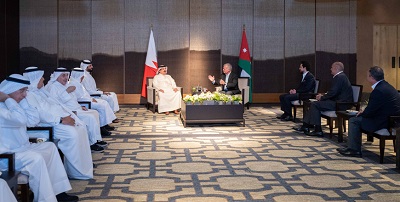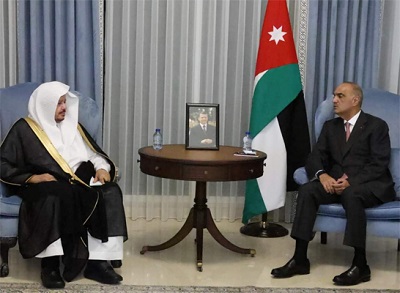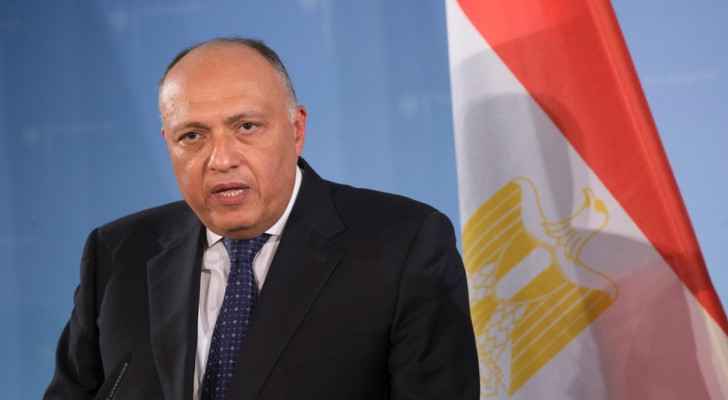OPEC: In the shadow of NOPEC - By Dr. Mohamed A. Ramady, Al Arabiya
After a tense few days, the OPEC Vienna June meeting concluded on a successful note with all parties – Russia and Saudi Arabia on the one hand and Iran, Venezuela, and Iraq on the other – claiming that they can live with the final agreement made. However, the devil is in the details and the final communiqué was a masterful document in ambiguity. All things considered, Saudi Arabia with Russian support did a pretty impressive job in the messaging of OPEC meeting to satisfy sharply juxtaposed demands.
The maths first . Despite the nominal one million bpd of added crude supply cited, the actual additional crude that OPEC plus will be bringing to market is more likely to be between 600,000bpd to perhaps as much as 800,000 bpd . More importantly, Gulf Arab producers are indicating an implicit near-term price cap target around $70-75 a barrel, subject to review at OPEC’s extraordinary meeting in September in Algiers to celebrate the two-year OPEC production agreement that has set the stage for managing output .
Best effort to boost output
It would seem that all 11 OPEC member states will make a best effort to increase their collective output on a pro rata basis to bring down the “over-compliance” to the 2016 Vienna output cuts to 100%. That roughly translates into about 700,000 bpd of OPEC oil, to which Russia and the other non-OPEC oil producers are expected to add another 300,000 bpd which is how one got to the one million headline nominal figure.
More importantly, the one million bpd figure did not make its way into the official OPEC statement, nor did any mention of by when or which OPEC member producers would be increasing output, in deference to objections. Only Saudi Arabia, Kuwait, and the UAE in any case have enough spare capacity to get anywhere near 700,000 bpd, and in theory output above their pro-rata share would require the blessing of the other OPEC members.
Although the added OPEC plus output formally begins on July 1, both the Saudis and the Russians have already been increasing output and will continue to do so, albeit gradually. The lower 600,000 bpd was the figure most frequently cited by the Saudis in their earlier briefings on the meeting side-lines and was repeated in the meeting. It seems likely the additional Saudi-Russian led output will be closer to 800,000 bpd by year-end.
Review in September
The agreement today will be reviewed at the extraordinary OPEC meeting in September. Output could be adjusted up, or down, depending on the review of global demand and supply. In particular, further declines in Libyan and Venezuelan output could easily offset increases from Saudi Arabia and Russia. That could mean the need for a considerable output increase by Saudi Arabia, especially as the imposition of the US sanctions on Iran approaches.
All said and done, President Trump was an exceptionally influential factor in the OPEC deliberations, much to Iran’s annoyance. The OPEC countries were no doubt thankful Trump’s threatening tweets during their Vienna meeting were aimed at the Germans and the European Union. This Trump factor drew nearly as much attention in the both the meeting itself and on the sidelines as the actual agreement. It is widely understood, for instance, that some countries put the one million figure into the media primarily to deflect or at least delay public tweets or comments by President Trump during the OPEC meeting that would have seriously undermined the fragile consensus that Saudi and Russian officials , who were pushing for a higher level of 1.5 million bpd , were struggling to pull together.
Iran was the primary hold-out, though its anger over the US factor is widely shared by the other non-GCC OPEC members like Venezuela. At one point , Iranian Oil Minister Bijan Zanganeh threatened to derail the deal altogether as he stormed out of the Joint Ministerial Monitoring Committee meeting after being denied the floor to question the estimated supply shortfalls.
Iran was also understood to have demanded the final OPEC statement to include a formal OPEC condemnation of US sanctions being imposed on OPEC member countries, which Tehran clearly did not get.
Dark cloud
There is another concern hanging like a dark cloud over OPEC going forward: not only is the close Saudi and Gulf attention to US desires for low oil prices amid the confrontation with Iran a factor, but so is the US threat to press ahead with the “No Oil Producing and Exporting Cartels Act,” or NOPEC bill. The bill, which proposes making the cartel subject to the Sherman antitrust laws, has been stalled in Congress since 2007.
Both President Bush and President Obama threatened to veto the bill for its threat to commerce and international relations in potentially tying up a few dozen other countries as defendants in US courts and US lawyers seeking damages.
President Trump, however, is much more of a wild card, and could voice his support for the bill especially if oil prices continue to top to the $80 levels.
The odds that NOPEC passes are small but rising. Neither House Speaker Paul Ryan nor Senate Majority Leader Mitch McConnell were in positions of power when a similar bill passed both houses of Congress in 2007 with strong margins. Majority Leader McConnell is an internationalist by experience and stubborn by nature, and may move to block the bill.
Analysts are uncertain whether retiring Speaker Paul Ryan, who is now a lame duck, will stand against the pressure to schedule a House vote, especially if the President is pushing for the bill. The US legislative threat, as damaging as it might be more broadly if it ever became law, is nevertheless likely to hang over the next round of OPEC deliberations in September, especially if prices are again surging. If this happens, then the future of OPEC itself as an organisation will be under threat and it may pave the way for a new international energy realignment between countries, especially between Saudi Arabia and Russia to go their own way, along with a few like-minded Gulf allies.
For the time being, OPEC has served its purpose as a useful venue for compromise but the fractures are there.
Latest News
 King, Bahrain monarch stress need to maintain Arab coordination
King, Bahrain monarch stress need to maintain Arab coordination Security Council to vote Thursday on Palestinian state UN membership
Security Council to vote Thursday on Palestinian state UN membership Dubai reels from floods chaos after record rains
Dubai reels from floods chaos after record rains Khasawneh, Saudi Shura Council speaker discuss bilateral ties, regional developments
Khasawneh, Saudi Shura Council speaker discuss bilateral ties, regional developments Egyptian Foreign Minister condemns potential Palestinian displacement as 'war crime'
Egyptian Foreign Minister condemns potential Palestinian displacement as 'war crime'
Most Read Articles
- Senate president, British ambassador discuss strategic partnership, regional stability
- Jordan urges UN to recognise Palestine as state
- JAF carries out seven more airdrops of aid into Gaza
- Temperatures to near 40 degree mark next week in Jordan
- Safadi, Iranian counterpart discuss war on Gaza, regional escalation
- UN chief warns Mideast on brink of ‘full-scale regional conflict’
- US vetoes Security Council resolution on full Palestinian UN membership
- Google fires 28 employees for protesting $1.2 billion cloud deal with “Israeli” army
- Biden urges Congress to pass 'pivotal' Ukraine, Israel war aid
- Israeli Occupation strike inside Iran responds to Tehran's provocation, reports say